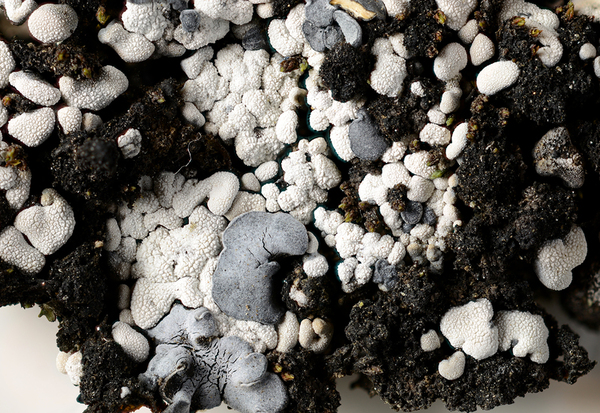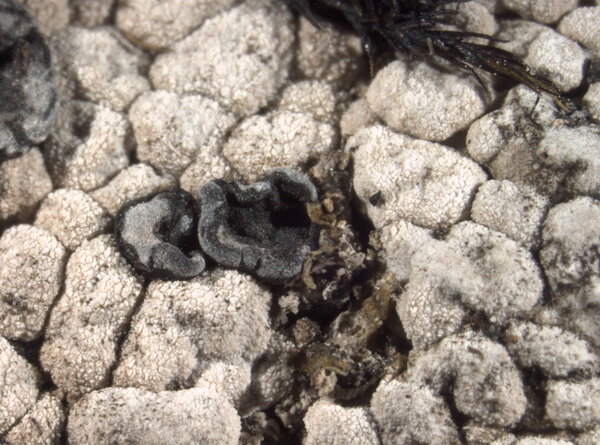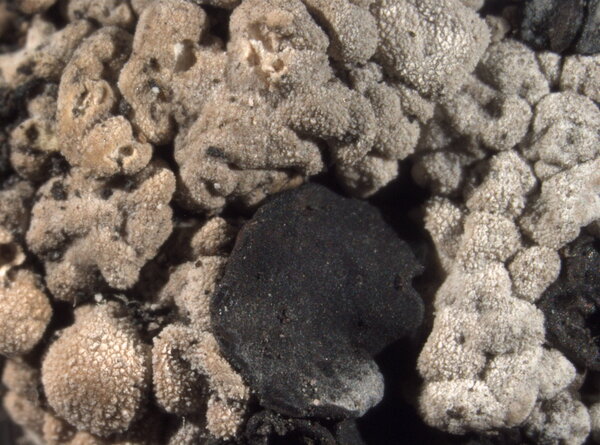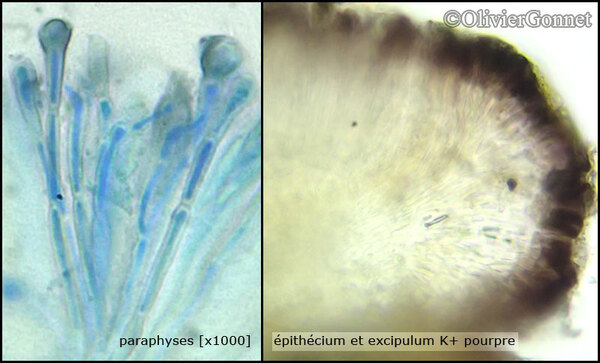Thalloidima rosulatum Anzi
Atti Soc. Ital. Sc. Nat. Milano, 11: 166, 1868.
Synonyms: Biatorina rosulata (Anzi) Jatta; Toninia melanocarpizans Zahlbr.; Toninia rosulata (Anzi) H. Olivier
Distribution: N - Frl, Ven, TAA (Nascimbene & al. 2022), Lomb, Piem (Isocrono & al. 2004), VA (Piervittori & Isocrono 1999).
Description: Thallus squamulose, indeterminate or forming a subrosulate crust, the squamules up to 6 mm wide, convex to bullate when young, then flattened, irregularly and often deeply lobed; upper surface pale grey, thick, densely covered in a white, granular pruina, dull, with shallow fissures in the cortex; lower surface pale brown to black. Upper cortex 30-70(-100) µm thick, without a distinct epinecral layer, overlain with crystals of calcium oxalate; algal layer continuous; medulla white, lacking crystals. Apothecia frequent, lecideine, rounded to irregularly lobed, sessile, strongly constricted at base, up to 3(-4) mm across, with a black, faintly pruinose, weakly concave to weakly convex, smooth disc, and a distinct, rather thick, smooth, concolorous proper margin. Proper exciple grey in outer part, pale grey to colourless within, the pigmented parts K+ and N+ violet; epithecium grey, K+ and N+ violet; hymenium colourless, 60-70 µm high; paraphyses not conglutinated, simple or sparingly branched and anastomosing in upper part, thin-walled, the apical cell distinctly swollen and covered by a gelatinous pigment cap e; hypothecium pale brown to colourless. Asci 8-spored, clavate, surrounded by a gelatinous I+ blue coat, with a well-developed I+ blue tholus with a I+ darker blue tube and a well-developed ocular chamber, Bacidia-type. Ascospores 1-septate, hyaline, fusiform, 14-22 x 3-5 µm. Photobiont chlorococcoid. Spot tests: thallus K-, C-, KC-, P-, UV-. Chemistry: thallus without lichen substances, Sedifolia-grey pigment in apothecia.
Note: an arctic-alpine, mainly European species found on soil and in fissures and crevices of calciferous rocks, often on cyanobacteria or cyanobacterial lichens when young, with optimum above treeline.
Growth form: Squamulose
Substrata: rocks, soil, terricolous mosses, and plant debris
Photobiont: green algae other than Trentepohlia
Reproductive strategy: mainly sexual
Commonnes-rarity: (info)
Alpine belt: rather rare
Subalpine belt: very rare
Oromediterranean belt: absent
Montane belt: extremely rare
Submediterranean belt: absent
Padanian area: absent
Humid submediterranean belt: absent
Humid mediterranean belt: absent
Dry mediterranean belt: absent
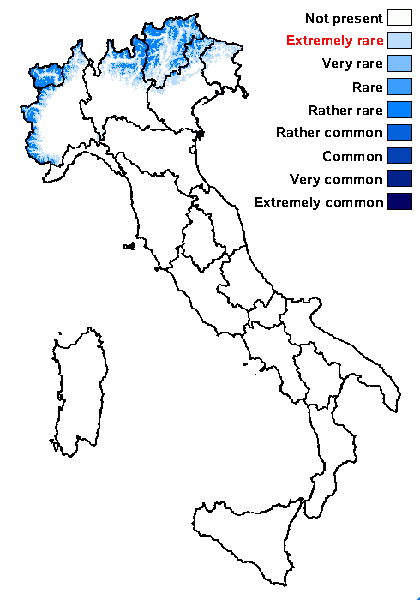
Predictive model
Herbarium samples
Growth form: Squamulose
Substrata: rocks, soil, terricolous mosses, and plant debris
Photobiont: green algae other than Trentepohlia
Reproductive strategy: mainly sexual
Commonnes-rarity: (info)
Alpine belt: rather rare
Subalpine belt: very rare
Oromediterranean belt: absent
Montane belt: extremely rare
Submediterranean belt: absent
Padanian area: absent
Humid submediterranean belt: absent
Humid mediterranean belt: absent
Dry mediterranean belt: absent

Predictive model
| Herbarium samples |
 INDEX FUNGORUM
INDEX FUNGORUM
 GBIF
GBIF
 DOLICHENS
DOLICHENS
